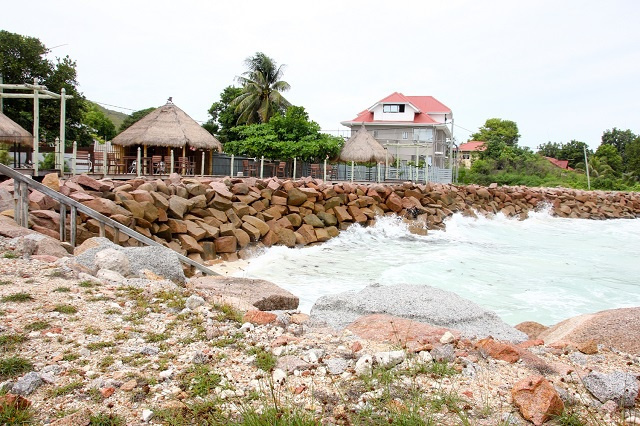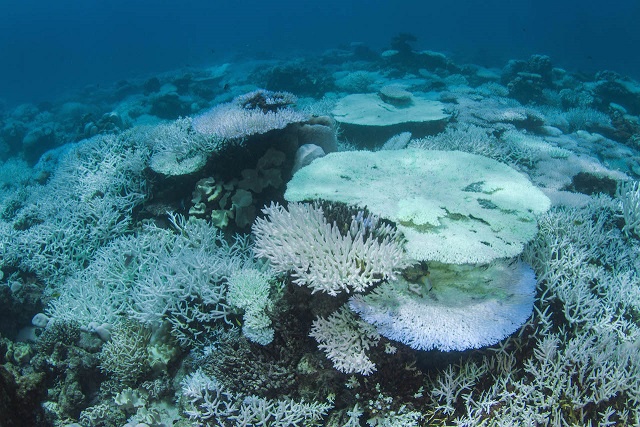Climate change: Seychelles study warns of future extreme weather events and higher temperatures

A large part of the infrastructure, population, and economic activities in Seychelles is located in the coastal zone. (Romano Laurence)
The future climate of Seychelles is expected to be bleak unless major changes are made in order to curb the impacts of climate change, says a top meteorological official.
Much of the talk worldwide is on the effects of climate change especially on where many parts of the world are experiencing severe weather events and extreme temperatures.
Vincent Amelie, chief executive of the Seychelles Meteorological Authority (SMA), told SNA that Seychelles should count itself somewhat lucky so far, but without preventive measures, the island nature could be in serious danger as well.
Amelie recently completed a study that follows the climate of Seychelles, an archipelago in the western Indian Ocean, for the past 10 years and the results paint a very dim picture.
"I started the study in 2020 and the results will be able to be used to take action and prepare for what may come in the future, with regard to our local climate," he explained.
In terms of rainfall, Amelie said that his study has shown that the average yearly rainfall in Seychelles has not really changed, remaining at approximately 2,500 millimetres, but has warned of extreme weather events.
"What we will likely see is that while annual rainfall stays the same, we could have extreme rainfall, where a high amount of rain could fall at once, which could cause disasters, while on the opposite end, it could mean long periods without rain can also happen," he added.
Amelie explained that these extreme weather events could become more frequent and much more severe as time goes on.
He found that the most worrying changes have taken place in temperatures and that the maximum record temperature is increasing, while the minimum temperature is also on the higher end. This shows that Seychelles is getting warmer.
So far, the maximum temperature ever recorded in Seychelles is 34.8 degrees in 2013.
"Obviously, with higher global temperatures, there is the issue of sea level rise. We have seen that in Seychelles, the sea level is increasing by 0.66 cm per year, which means that by 2200, the sea will have risen by more than half a metre, which is very alarming," said Amelie.
The biggest concern for Seychelles is the impact this will have on its coastal areas especially at high tide and during rough weather. A large part of the infrastructure, population, and economic activities in Seychelles is located in the coastal zone
He also gave an update on this year's situation with the El Niño phenomenon.
El Niño is associated with a band of warm ocean water that develops in the central and east-central equatorial Pacific including the area off the Pacific coast of South America.
It has an impact on ocean temperatures, the speed and strength of ocean currents, the health of coastal fisheries, and local weather from Australia to South America and beyond.
 |
| Another bleaching event occurred in Seychelles in 2016 that affected partially-recovered reef. (Chris Mason-Parker -GVI)) Photo License: All Rights Reserved |
"The issue with El Niño is that during our dry season it gives us more rainfall than we usually have during that period," explained Amelie.
"The danger is that if El Niño continues to affect us during our rainy season, giving us more than the normal amount of rain, this can then cause major issues such as flooding and other disasters associated with heavy rainfall," he added.
Another concern is the impact a warmer ocean temperature will have on marine life, especially the threat of coral bleaching, for island nations like Seychelles.
Coral bleaching is a phenomenon where coral turns white or colours fade. It is caused by an increase in sea temperature.
Seychelles lost up to 90 percent of its coral reefs in 1998, during the biggest El Niño weather event ever recorded in the western Indian Ocean.
Another bleaching event occurred in Seychelles in 2016 that affected partially-recovered reefs and caused an almost 50 percent decrease in hard coral coverage.





